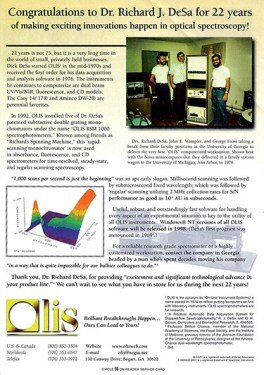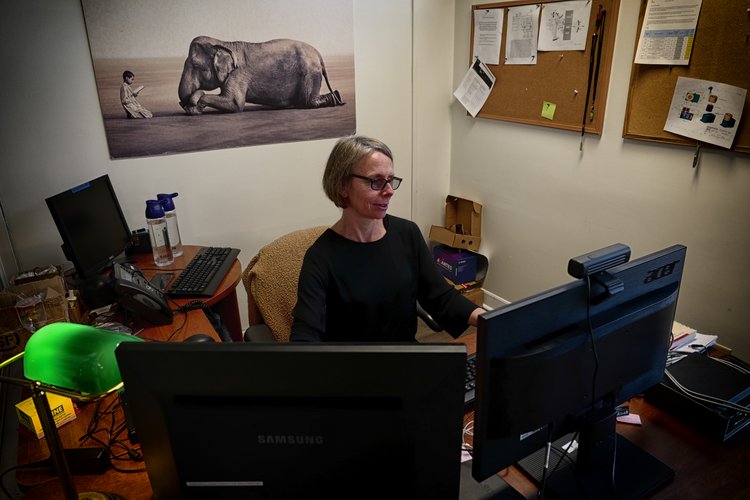How Circularly Polarized Luminescence can Save You Time, Stress, and Money.
How Circularly Polarized Luminescence can Save You Time, Stress, and Money.
Blog Article
Rumored Buzz on Uv/vis/nir
Table of ContentsCircular Dichroism Things To Know Before You BuyThe Greatest Guide To Circularly Polarized LuminescenceTop Guidelines Of Uv/visGetting The Uv/vis To WorkThe Best Strategy To Use For Uv/vis

Although spectrophotometry is most commonly used to ultraviolet, noticeable, and infrared radiation, contemporary spectrophotometers can interrogate broad swaths of the electro-magnetic spectrum, consisting of x-ray, ultraviolet, visible, infrared, and/or microwave wavelengths. Spectrophotometry is a tool that depends upon the quantitative analysis of particles depending on just how much light is taken in by colored substances.
Some Ideas on Spectrophotometers You Should Know
A spectrophotometer is commonly used for the measurement of transmittance or reflectance of options, transparent or nontransparent solids, such as polished glass, or gases. Although lots of biochemicals are colored, as in, they absorb noticeable light and for that reason can be measured by colorimetric treatments, even colorless biochemicals can frequently be converted to colored compounds ideal for chromogenic color-forming responses to yield substances suitable for colorimetric analysis.: 65 Nevertheless, they can also be designed to determine the diffusivity on any of the noted light varieties that normally cover around 2002500 nm utilizing various controls and calibrations.
An example of an experiment in which spectrophotometry is used is the decision of the stability constant of a service. A particular chain reaction within a service might take place in a forward and reverse direction, where reactants form items and products break down into reactants. Eventually, this chain reaction will reach a point of balance called a balance point.
Getting The Uv/vis/nir To Work
The amount of light that travels through the option is a sign of the concentration of particular chemicals that do not permit light to travel through. The absorption of light is due to the interaction of light with the electronic and vibrational modes of molecules. Each type of particle has a private set of energy levels related to the makeup of its chemical bonds and nuclei and therefore will soak up light of specific wavelengths, or energies, leading to unique spectral homes.
They are extensively used in numerous markets consisting of semiconductors, laser and optical production, printing and forensic assessment, as well as in labs for the research study of chemical substances. Spectrophotometry is typically used in measurements of enzyme activities, determinations of protein concentrations, decisions of enzymatic kinetic constants, and measurements of ligand binding reactions.: 65 Ultimately, a spectrophotometer is why not find out more able to figure out, depending on the control or calibration, what substances are present in a target and precisely how much through estimations of observed wavelengths.
Invented by Arnold O. Beckman in 1940 [], the spectrophotometer was developed with the help of his coworkers at his business National Technical Laboratories founded in 1935 which would end up being Beckman Instrument Business and eventually Beckman Coulter. This would come as an option to the formerly produced spectrophotometers which were unable to absorb the ultraviolet properly.
The Ultimate Guide To Spectrophotometers
It would be found that this did not give acceptable results, for that reason in Design B, there was a shift from a glass to a quartz prism which enabled for much better absorbance results - UV/Vis (https://www.callupcontact.com/b/businessprofile/Olis_Clarity/8903776). From there, Model C was born with a change to the wavelength resolution which ended up having 3 units of it produced
It irradiates the sample with polychromatic light which the sample takes in depending on its properties. Then it is transmitted back by grating the photodiode range which finds the wavelength area of the spectrum. Ever since, the creation and execution of spectrophotometry gadgets has actually increased profoundly and has turned into one of the most innovative instruments of our time.

Things about Uv/vis/nir
The grating can either be movable or fixed.
In such systems, the grating is fixed and the strength of each wavelength of light is determined by a various detector in the array. When making transmission measurements, the spectrophotometer quantitatively compares the portion of light that passes through a reference service and a test option, then electronically compares the intensities of the two signals and calculates the percentage of transmission of the sample compared to the reference requirement.

Report this page